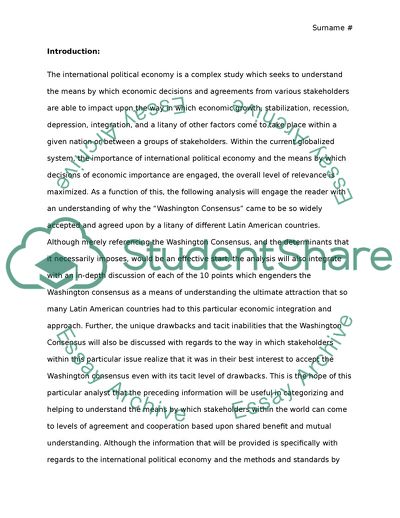Cite this document
(Washington Consensus: Discussion of Why This Particular Approach was Coursework - 2, n.d.)
Washington Consensus: Discussion of Why This Particular Approach was Coursework - 2. https://studentshare.org/politics/1804500-why-was-the-washington-consensus-irresistible-in-latin-america
Washington Consensus: Discussion of Why This Particular Approach was Coursework - 2. https://studentshare.org/politics/1804500-why-was-the-washington-consensus-irresistible-in-latin-america
(Washington Consensus: Discussion of Why This Particular Approach Was Coursework - 2)
Washington Consensus: Discussion of Why This Particular Approach Was Coursework - 2. https://studentshare.org/politics/1804500-why-was-the-washington-consensus-irresistible-in-latin-america.
Washington Consensus: Discussion of Why This Particular Approach Was Coursework - 2. https://studentshare.org/politics/1804500-why-was-the-washington-consensus-irresistible-in-latin-america.
“Washington Consensus: Discussion of Why This Particular Approach Was Coursework - 2”. https://studentshare.org/politics/1804500-why-was-the-washington-consensus-irresistible-in-latin-america.


